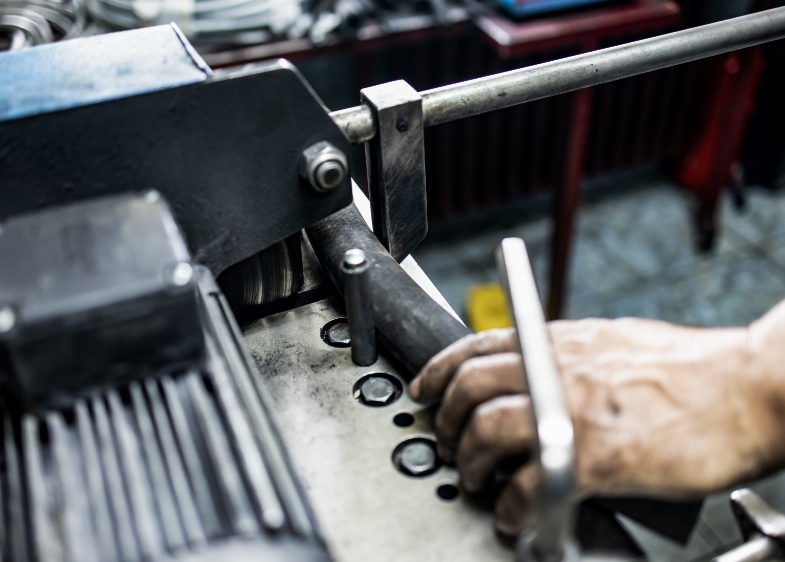Diagnosing the Root Cause of Hydraulic Seal Failure
/ 2
What are failed seals trying to tell you, and how can the right support prevent them from happening again?
Walk into any hydraulic trade counter, and you’ll likely find a technician holding a worn or shredded seal and asking, “Why did this fail?”
It’s a common question, and a crucial one, because while replacing a faulty seal may fix the immediate leak, failing to understand why it happened can almost guarantee a repeat failure.
Hydraulic seal failures are rarely random. They’re symptoms of deeper system issues like pressure spikes, heat, fluid incompatibility, misalignment, or contamination that can quietly compromise performance long before an actual breakdown.
When seals speak, listen
A failed seal is like a warning light on a dashboard. It tells you something upstream or downstream isn’t quite right.
The challenge is reading the signs correctly. Knowing what to ask at the counter can save hours of head scratching and repeated failures. Some common symptoms you can report include:
- Leaks forming shortly after fitting a new seal
- Rapid wear or hardening of rubber components
- Seal lips torn, nibbled, or extruded
- System pressure inconsistencies or sudden drops
Each of these signs points to specific root causes. The trick lies in diagnosing, not just replacement.
The usual suspects
There are a handful of common culprits when it comes to seal degradation. Knowing how they show up can make all the difference.
Excessive Heat
Overheating hardens elastomers, reducing flexibility and creating cracks or shrinkage. It can often point to:
- Inadequate cooling
- Overloaded systems
- Continuous operation beyond design parameters
Pressure spikes & overloading
Even short bursts of high pressure can cause extrusion, forcing the seal into gaps it shouldn’t enter.
Common causes include:
- Faulty relief valves
- Rapid directional changes
- Incorrect seal hardness or profile
Fluid incompatibility
Not all seals are compatible with all fluids. Using the wrong seal material (like Nitrile where Viton is needed) leads to swelling, softening, or breakdown.
Contamination
Abrasive particles in the fluid or on the rod can create scoring or tear the seal. This can come from:
- Inadequate filtration
- Poor cylinder cleaning before installation
- Environmental ingress on exposed rods
Poor installation or design fit
Even the best seal will fail if installed incorrectly or with the wrong groove dimensions.
Counter support is the underestimated diagnostic tool
Your local trade counter is one of the most valuable yet overlooked resources in seal failure analysis.
A well-run hydraulic counter does more than stock shelves. It offers:
- Visual inspection and feedback on failed parts
- Advice on material compatibility and spec upgrades
- On-the-spot questions about operating pressures, cycles, and temperatures
- Recommendations for prevention accessories like wipers, back-up rings or upgraded filtration
Consider a customer who returns with a chewed-up U-cup seal. Instead of simply handing over a replacement, the counter technician notices scoring patterns and asks, “Are you running this with a rod wiper?”
A seemingly small question which can trigger a chance to practice that prevents future failure altogether.
Prevention is better than refit
Every failed seal brings downtime, lost output, and increased maintenance. Replacing it without understanding the cause is like resetting an alarm without fixing the fire.
Technical customers benefit from building a habit of root-cause thinking:
- Keep a sample of every failed seal
- Note the hours since installation
- Log any recent system changes or failures
This data, shared with a knowledgeable counter technician, turns a reactive fix into a proactive one.
One of the best ways to be proactive is to run regular audits on hydraulic components. Identifying patterns in seal failure across similar machines often uncovers larger design or maintenance issues that can be addressed system-wide.
One size rarely fits all
Seal selection isn’t just about the shape. Material choice is key:
- Nitrile (NBR): Good for mineral oils, poor at handling high temperatures
- Viton (FKM): Excellent for high temperatures and chemical resistance
- Polyurethane (PU): Great abrasion resistance, often used for dynamic seals
- EPDM: Compatible with water-based fluids but degrades with oils
Understanding these trade-offs helps ensure the seal lasts the life it should. A good trade counter will help you choose the right profile and the right compound.
The advantage of in-person advice
Online ordering is convenient, but when it comes to troubleshooting hydraulic failures, face-to-face expertise still holds the edge. Bringing the part to a counter means real-time discussion, physical inspection, and potentially better recommendations.
This is particularly important when dealing with older or custom systems, where original part numbers may no longer apply and the seal has to be matched based on application data and measurement.
Your first line of defence
Hydraulic systems are under constant strain. Seals are their unsung heroes, quietly maintaining pressure, excluding contaminants, and keeping everything in motion.
When they fail, the knock on effects can be costly in both fixing things and the time the machines are out of use.
But they also offer an opportunity. When analysed properly and discussed with someone who understands hydraulic systems in detail, a failed seal becomes a window into the system’s overall health.
So the next time a seal gives up on the job, don’t just replace it, read it. And when you’re ready for a trade counter that treats every failed part as a chance to strengthen your system, not just patch it.
Talk to our team or visit one of our trade counters today.


